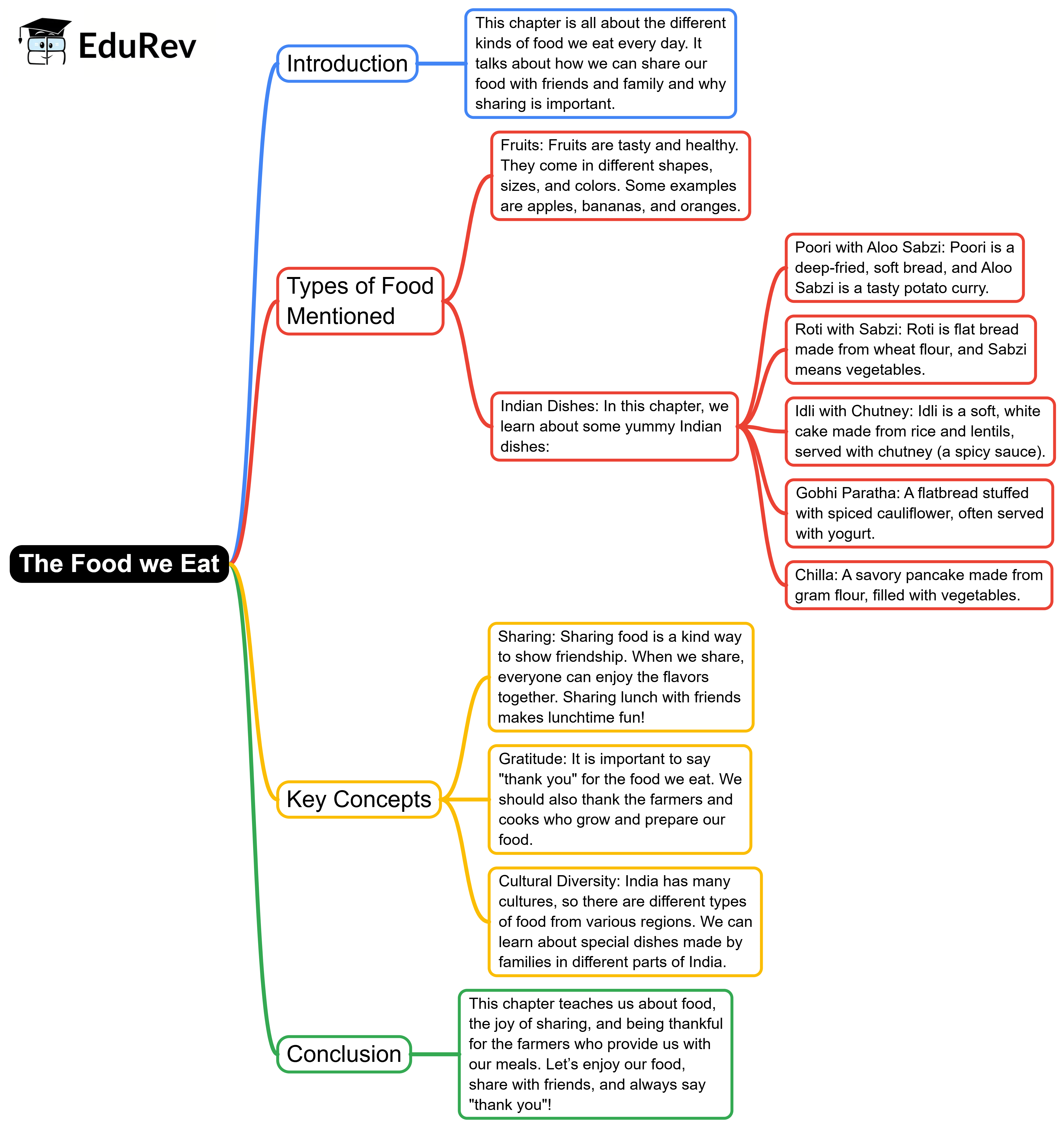Class 1 Exam > Class 1 Notes > English for Class 1 (Mridang) > Mind Map: The Food we Eat
Mind Map: The Food we Eat | English for Class 1 (Mridang) PDF Download

The document Mind Map: The Food we Eat | English for Class 1 (Mridang) is a part of the Class 1 Course English for Class 1 (Mridang).
All you need of Class 1 at this link: Class 1
|
27 videos|168 docs|34 tests
|
FAQs on Mind Map: The Food we Eat - English for Class 1 (Mridang)
| 1. What are the primary food groups that make up a balanced diet? |  |
Ans. A balanced diet typically consists of five primary food groups: fruits, vegetables, grains, protein (which includes meat, fish, eggs, and legumes), and dairy. Each group provides essential nutrients that contribute to overall health and well-being.
| 2. How does the food we eat affect our health? |  |
Ans. The food we consume plays a crucial role in our health by providing the necessary nutrients our bodies need to function effectively. A diet rich in fruits, vegetables, whole grains, and lean proteins can help prevent chronic diseases, maintain a healthy weight, and support overall physical and mental health.
| 3. What are the benefits of eating organic foods? |  |
Ans. Organic foods are grown without synthetic pesticides, herbicides, and fertilizers, which may reduce exposure to harmful chemicals. They often contain more antioxidants and nutrients due to healthier soil practices and can promote environmental sustainability. Additionally, some people find that organic foods taste better.
| 4. How can I make healthier food choices when eating out? |  |
Ans. To make healthier choices when dining out, consider reviewing the menu beforehand, opting for grilled or baked options instead of fried, choosing whole grain sides, and avoiding sugary drinks. Additionally, you can ask for dressings and sauces on the side and control portion sizes by sharing dishes or asking for a take-home box.
| 5. What role do food labels play in making healthy eating choices? |  |
Ans. Food labels provide essential information about the nutritional content of packaged foods, including calorie counts, serving sizes, and the amounts of fats, sugars, vitamins, and minerals. Understanding food labels can help consumers make informed choices about what they eat, allowing them to select healthier options and manage their dietary needs effectively.
Related Searches
















